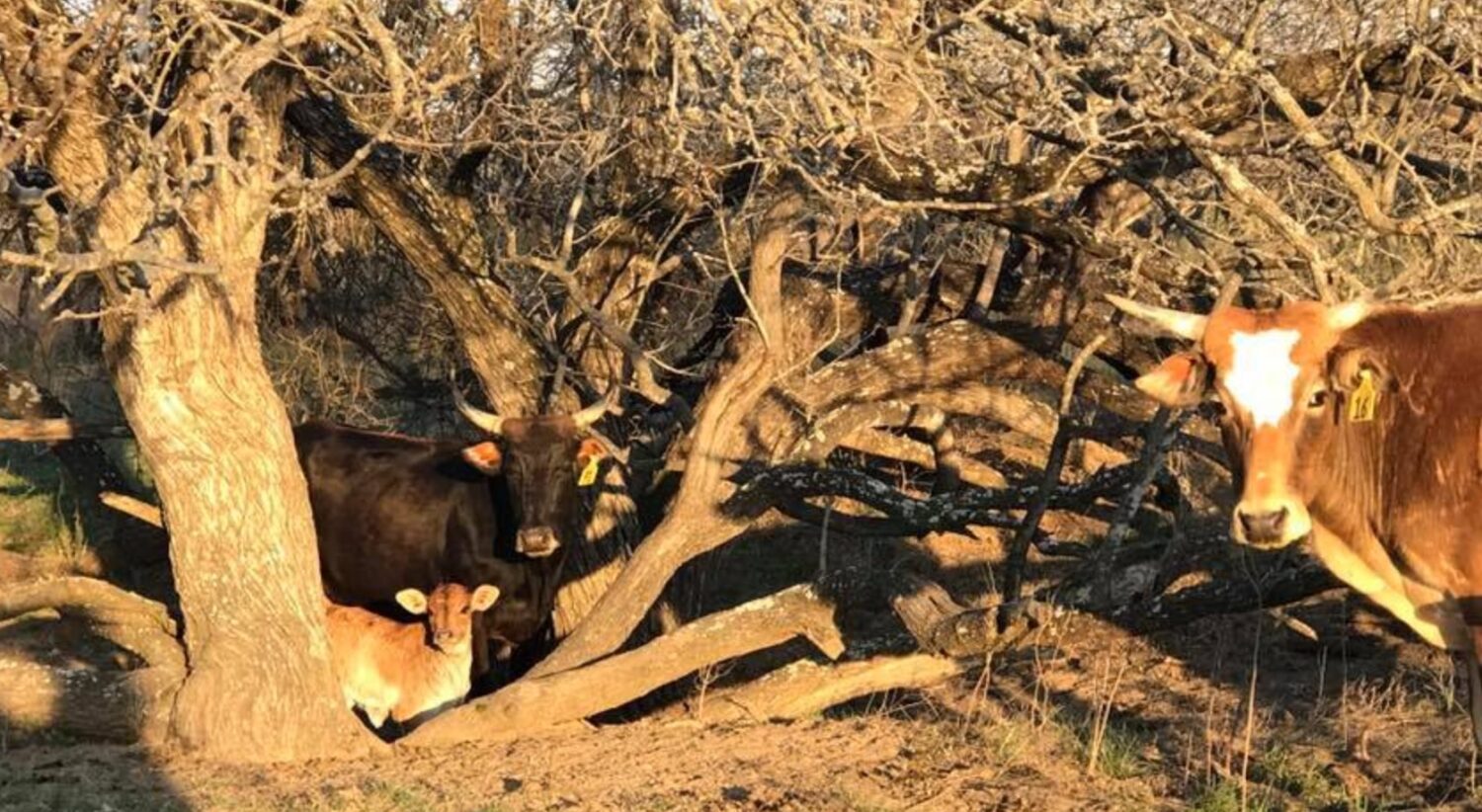by Terry Lidral

The bucking dummy is an essential tool in the evaluation, training and conditioning of performance bucking bulls. The dummy takes the place of a rider and only puts weight on the animal’s back. It does not shock or stimulate a bull. Even though it is a common training device in the industry, there are variations in use and size. The method and procedure of how a bull is bucked with a dummy is up to the individual bull owner/trainer and depends on varying factors such as age of the bull, weather conditions, available facilities, training routine, competition schedule and the expectations being placed on the bull.
Lance Bloyd has been in the bucking bull industry for 15 years. He owns and operates Bucking Bull Pro, a company that, among other things, builds and repairs bucking dummies. Along with his merchandise business, Bloyd raises and trains bulls for competition.
The purpose of bucking a bull with a dummy is to evaluate a bull’s athleticism, talent and desire to buck in a manner that is safe and efficient for the animal and the trainer. It is a matter of preference by the owner/trainer as to how early and frequently that training begins. But, it is a common practice to buck a bull for the first time shortly after weaning to assess the animal’s worth as a keeper.
“I’ve been raising bucking bulls since 2004,” Bloyd told us. “I’ve been working on dummies for almost as long, which started from my need to repair a used dummy I bought for my own calves. I repaired the dummy and improved features to make it more reliable. Pretty soon I was repairing and modifying dummies for friends and it naturally evolved into my own line of Black Box Bucking Dummies and the creation of our family business Bucking Bull Pro.”
Dummies are available in various frames and weights. There are Black Box Dummies available to suit the personal preference of each customer.

“We build a 10-pound dummy called the ‘Mini’ on a narrow chassis to fit the backs of weanling bulls. The ‘All Around’ Dummy is 15-16 pounds and has a little wider dimensions for yearlings. For three-year olds, some people prefer the heavier weight of the 23 pound ‘Dually’ model or 60-pound weight of the ‘Dually and Budro’ rider replica.


As the sport of bull riding has progressed, there have been changes made to the weight and size of the dummy by some in the industry.
“We’ve come to find over the years that a bull that will buck with a dummy will do so no matter what weight you put on their back and that has created a trend of going ‘lighter’ with the dummies on the 2-year olds. In years past we have bucked the 2-year olds with our 23-pound model at ABBI events. This year we are bucking yearlings and 2-year olds with the 16-pound model. When bulls are responding and preforming well under the lighter weight, it makes the process of hanging dummies much easier for the event crew or bull trainer.”
One of the important factors in giving the bull a chance at the best possible trip with the dummy is making sure that the weight is distributed evenly on the bull. The strap should be secured so that the weight remains stable throughout the trip.
“It is important to get the dummy centered on the bull’s back,” Bloyd told us. “Its weight should be evenly distributed and it should be put on tightly enough so it doesn’t roll onto their side while they are bucking.”
Along with centered weight, Bloyd uses a shortened time for the practice trips his young bulls take with the dummy.
“When training bulls, I typically don’t leave the dummy on more than 1-3 seconds. I want my bull to ‘win.’ I let him buck the dummy off quickly to build confidence in himself and I never leave it on for a set time.”
Bloyd considers the dummy to be an effective tool in training and developing young bulls as they progress through the ranks to rider aged bulls. Dummies are also used to keep competition bulls in top performance condition.
“Typically, I buck bulls enough with the dummy when they are young that they make a fairly smooth transition to a rider. If they stood well in the dummy process, they typically do well with a rider,” explained Bloyd. “One of the differences from dummy to rider is the flank. With a dummy, the flank is stripped off the bull when the dummy comes off. With a rider, the flank is left on until the bull is stopped in the stripping chute where the flank is removed. I don’t use any special training to prepare them for this other than bucking them with the dummy and not using the flank pin.”
Bloyd sums it up this way. “When training and conditioning bulls with dummies, it’s a matter of personal preference and availability.”



How much is the prize of a dummy?
If you’re a member of our Bucking Stock Talk Group, just post and ask. If you’re not a member, join and then you can post and ask. Great people with great info there. Come join!
I’m trying to get an idea of pricing the bucking apparatus. Thx
Ask in Bucking Stock Talk group.